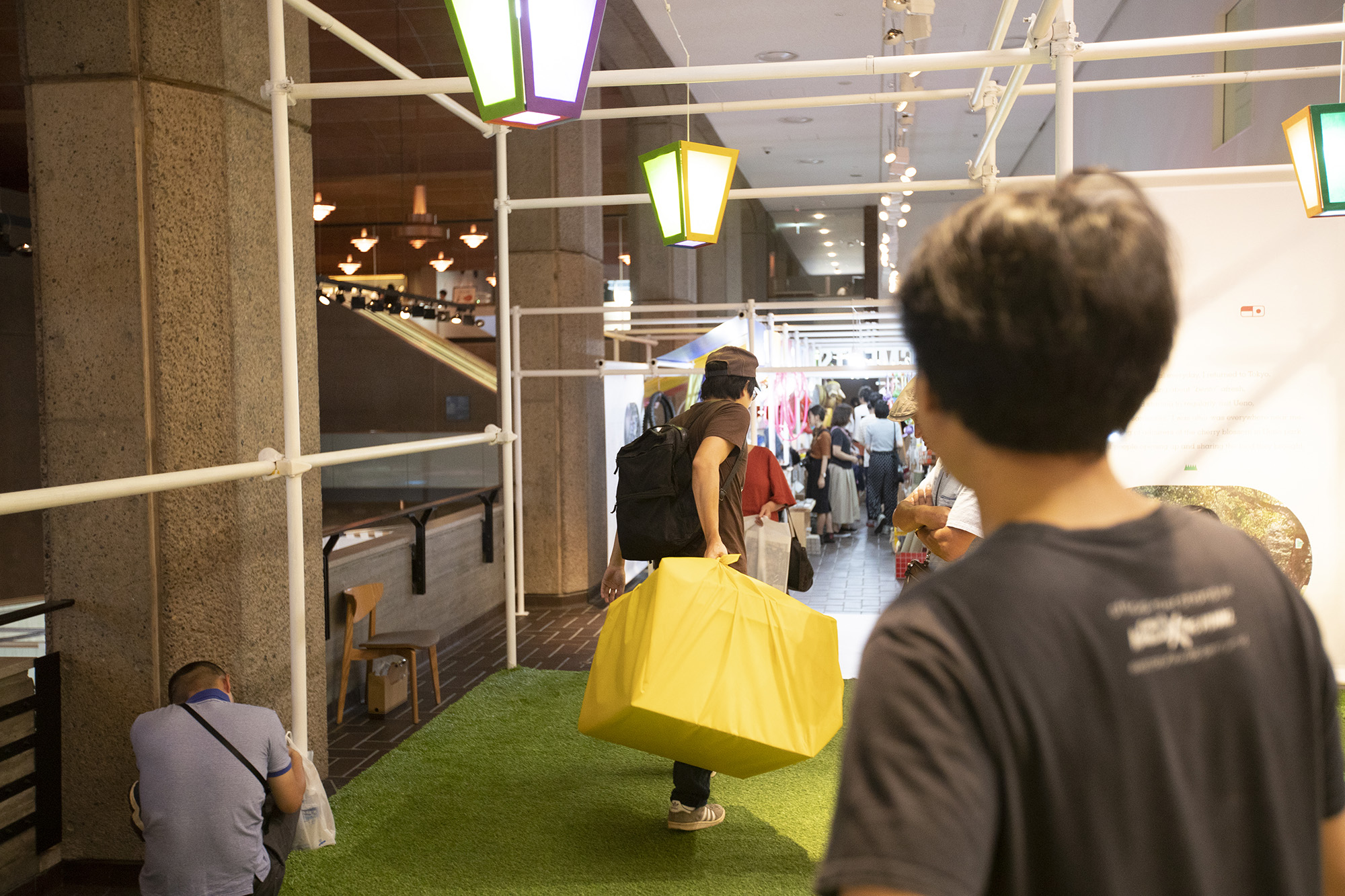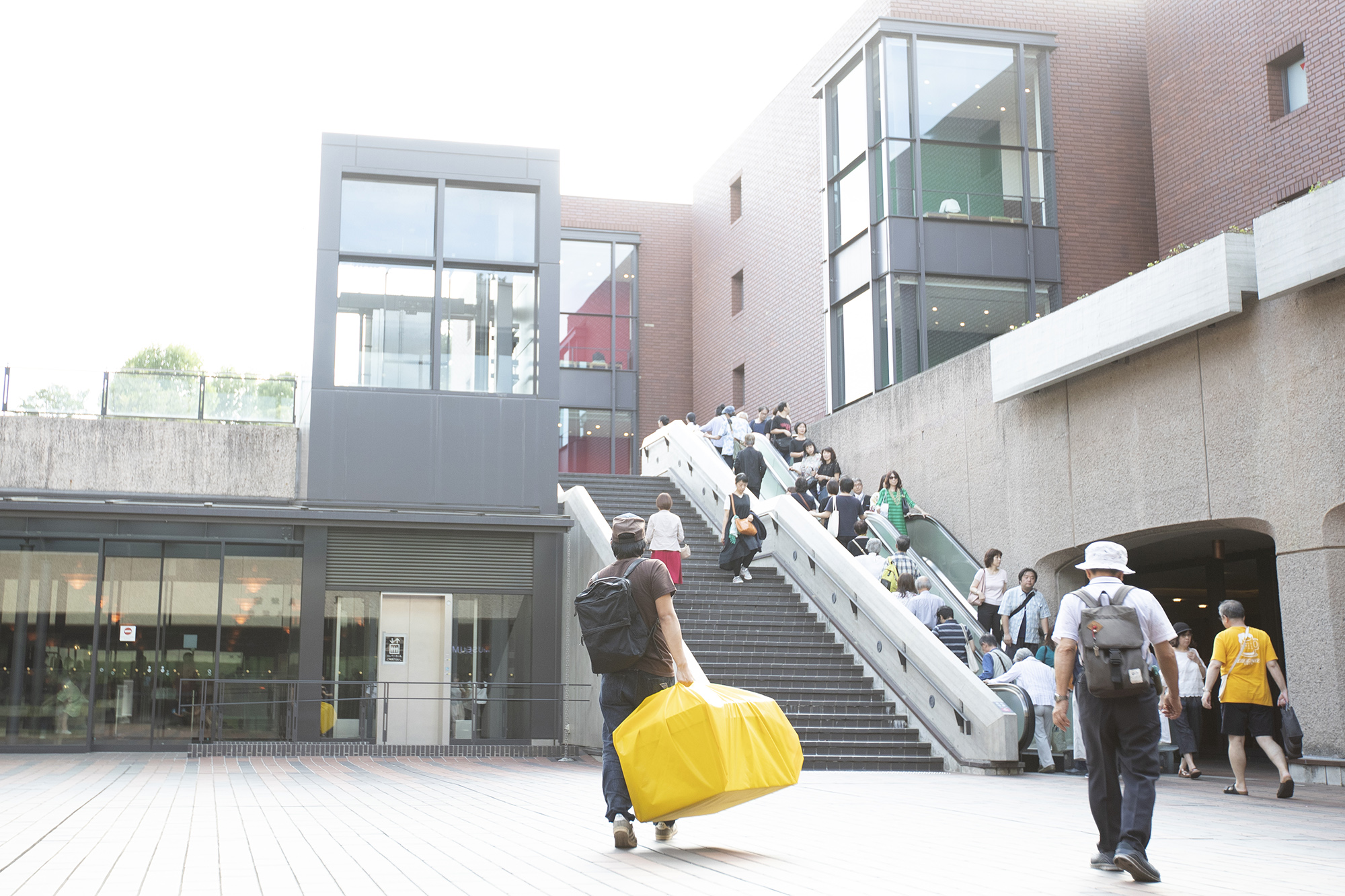
FRAGMENTS PASSAGE
フラグメンツ・パッセージ
Statement
When I was thinking about new project, I was on the island of Indonesia where such a culture seems to be remote from Japan.
On the island of Java, people wrap their food in paper to carry it. They open it and mix it up as they eat. As expected, the ingredients and manners are far from that of Japanese bento. But I wanted to search for the “sameness” between the two, which are seemingly far apart.
The market I encountered on the island of Bali had a jumbled atmosphere, and the boarders of object types and the shopkeepers were blurred. It was difficult to tell what is where, and it was unclear whether some were merchandise.
People often gather on a floor mat. They generally eat seated on the floor. And there, “a small gift” is exchanged. From someone to someone. And to people who happened to be there.Coffee, sweets, clothes, shoes, rings, and sometime even money!
Maybe they have less concept of “private belongings”. Quite often we found ourselves wearing other people’s sandals. When I am faced with the casual exchange of gifts, I realized how much I was unconsciously particular about “ownership”
From a tropical everyday, I returned to Tokyo.
And starting to regularly visit Ueno area whereTokyo Metropolitan Art Museum is located,
I realized the “sameness” I was after was everywhere near me. An overflowing of admirers of the cherry blossom in Ueno park. A view of people opening up and sharing the food they brought.
And there is history. People carrying their belongings with furoshiki gathering at Ueno Station, entrance to the Tohoku region. Spreading out objects, Ameya Yokocho was gradually formed from a chaotic market.
Spreading furoshiki and goza, opening a box, and people getting involved. A temporary community. Isn’t the nostalgic (yet simultaneously new) communication we have been having unconsciously up to this date, even though the ingredients and manners are far from each other,
connected to somewhere far away?
For example, isn’t the “osusowake”, sharing what each person has brought, and the “small gift” the same? Isn’t the custom of eating on the floor everyday and the custom of suddenly sitting down on a grass field for hanami, admiring cherry blossoms, similar?
Looking for things at the market in Bali and walking down the Ameya Yokocho feels the same.
I am looking for“ the appearance of the society” that exist in both places, which floats between two borders, without belonging to any.
新たなプロジェクトについて考えていたとき、私は日本の文化とはかけ離れているように思えるインドネシアの島々にいた。
ジャワ島では食事を運ぶとき、紙に包む。それをひらいてごちゃまぜにしながら食べる。やっぱり日本のお弁当とは、中身も所作もかけ離れている。でもあえて、遠いと思えるふたつの間にある「おなじ」を探してみたかった。
バリ島で出会った市場(パサール)は、雑多な雰囲気を醸し出していて、ものの種類や店主ごとでの境目がどこかあいまいだった。何がどこにあるかよくわからないし、売り物かもわからない何かが並んでいたりする。
床に敷いたゴザによく人が集う。食事も基本床座りだ。そこで「小さなギフト」が交わされる。誰かから誰かへ。またはその場に居合わせたみんなへ。コーヒー、お菓子、服、靴、指輪、たまにお金(!)。そもそも「自分の持ち物」という感覚が薄いからなのかもしれない。気づいたら誰かのサンダルを履いてることもしょっちゅうだ。さりげないギフトの行き来を目の当たりにするたびに、自分がいかに無意識的に「所有」にこだわっていたのか気付かされた。
熱帯の日常から東京にもどった。あらためて「お弁当」について考えながら上野に通いはじめると、探し求めていた「おなじ」がすぐ近くに散らばってる気がした。上野公園にあふれるお花見客。持ち寄った食事をひらいて分け合う景色。
それから、歴史。東北の玄関口、上野駅に風呂敷で荷物を抱えあつまった人びと。ものを広げ、混沌とした市からすこしずつ形成されてきたアメヤ横丁。
風呂敷やゴザを広げ、箱をひらいて、人が関わる。つかの間の共同体。中身や作法はかけ離れていても、僕らが今も無意識に続けている、なつかしい(でも同時にあたらしい)コミュニケーションは、どこか遠くとつながっていないだろうか?
たとえば、持ち寄ったものを分け合う「おすそわけ」と、あの「小さなギフト」はおなじなんじゃないだろうか。お花見のときに突然みんなが草っ原に座りはじめる風習は、毎日床座りで食事をする習慣と似てないか?
パサールで品探ししているときと、アメ横を歩いているときの感覚は、一緒な気がする。
かけ離れたふたつの境界をさまよいながら、どちらにもないけど、同時にどちらでもある「社会の姿」を探している。
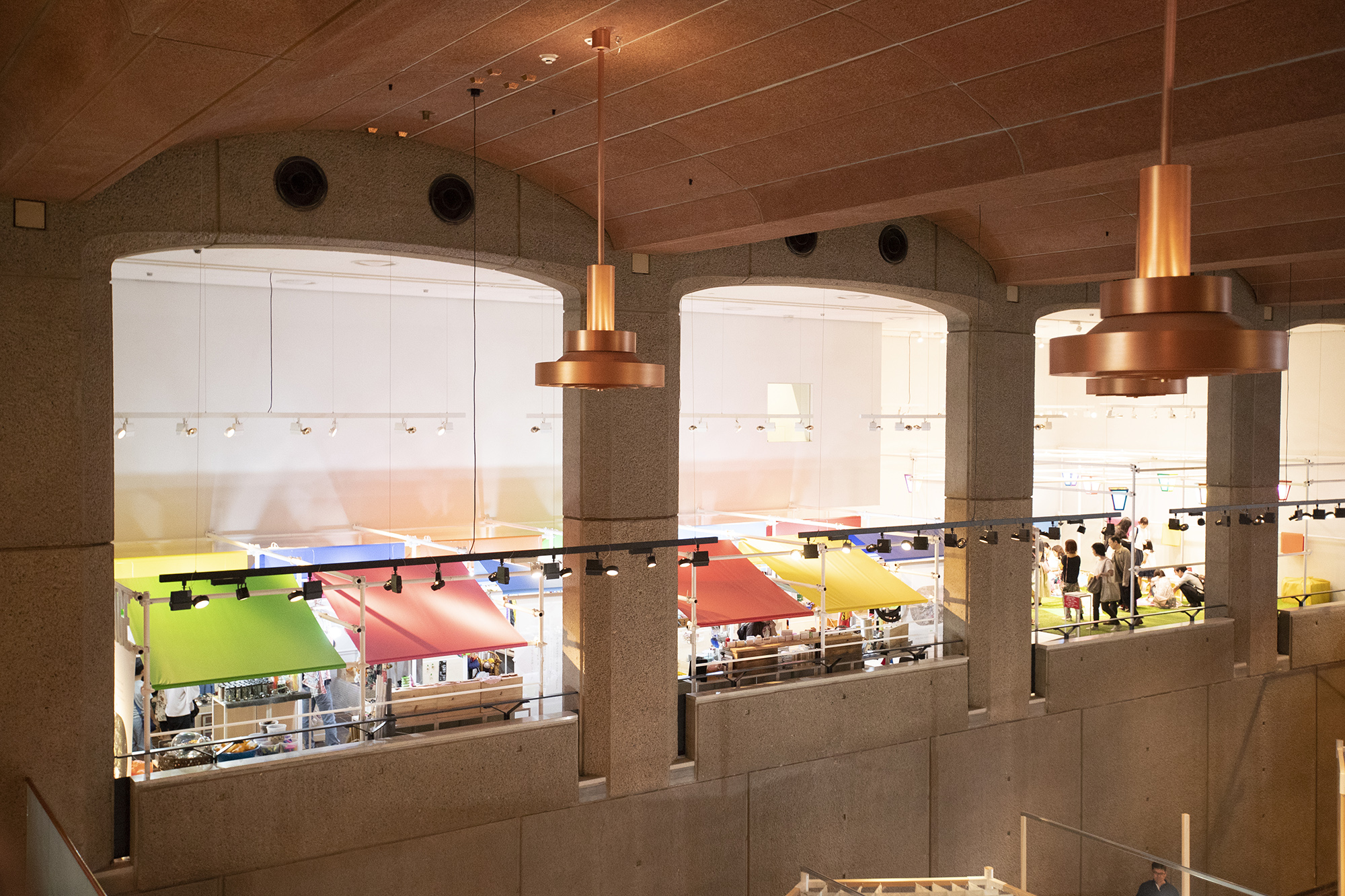



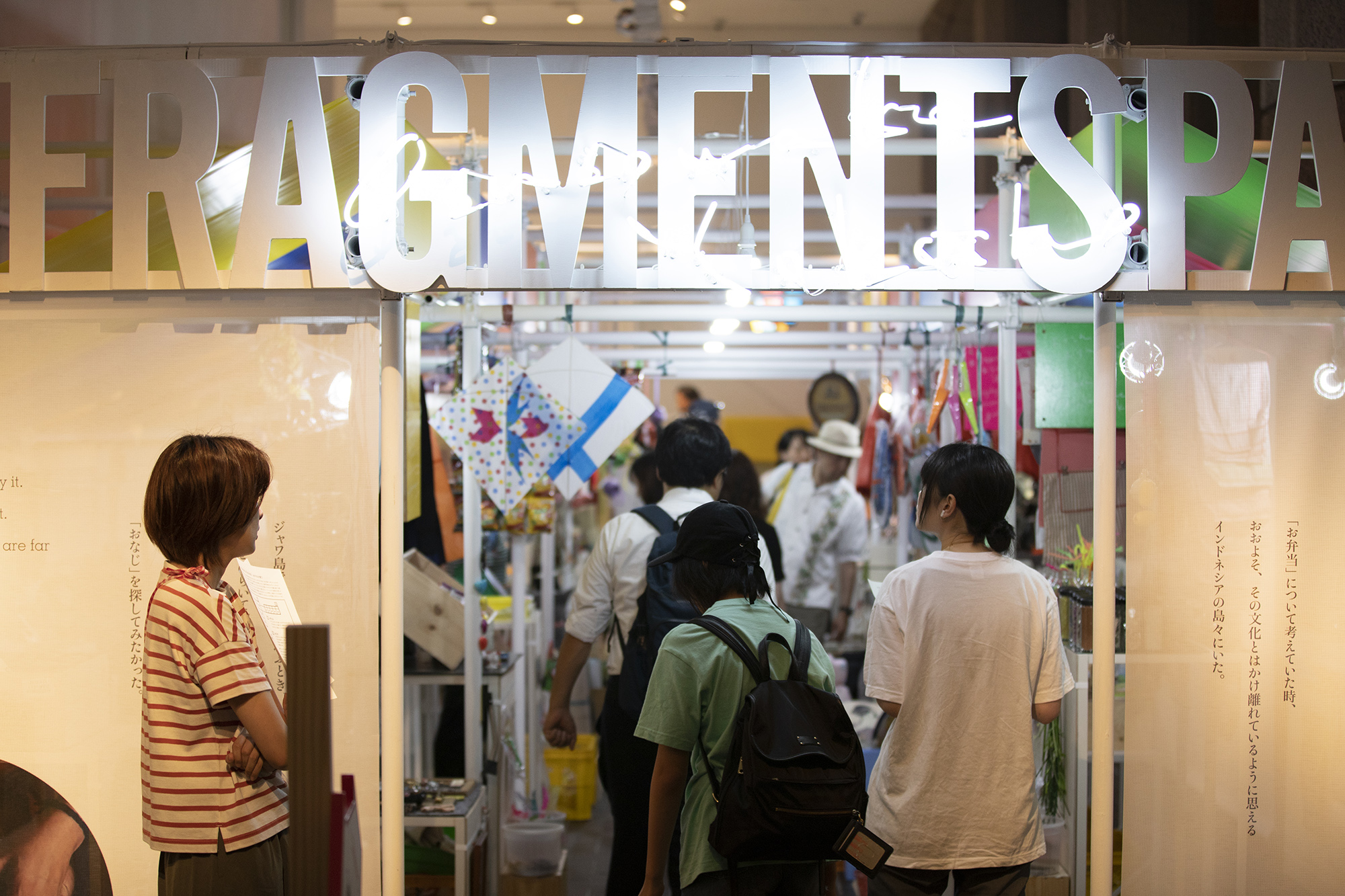
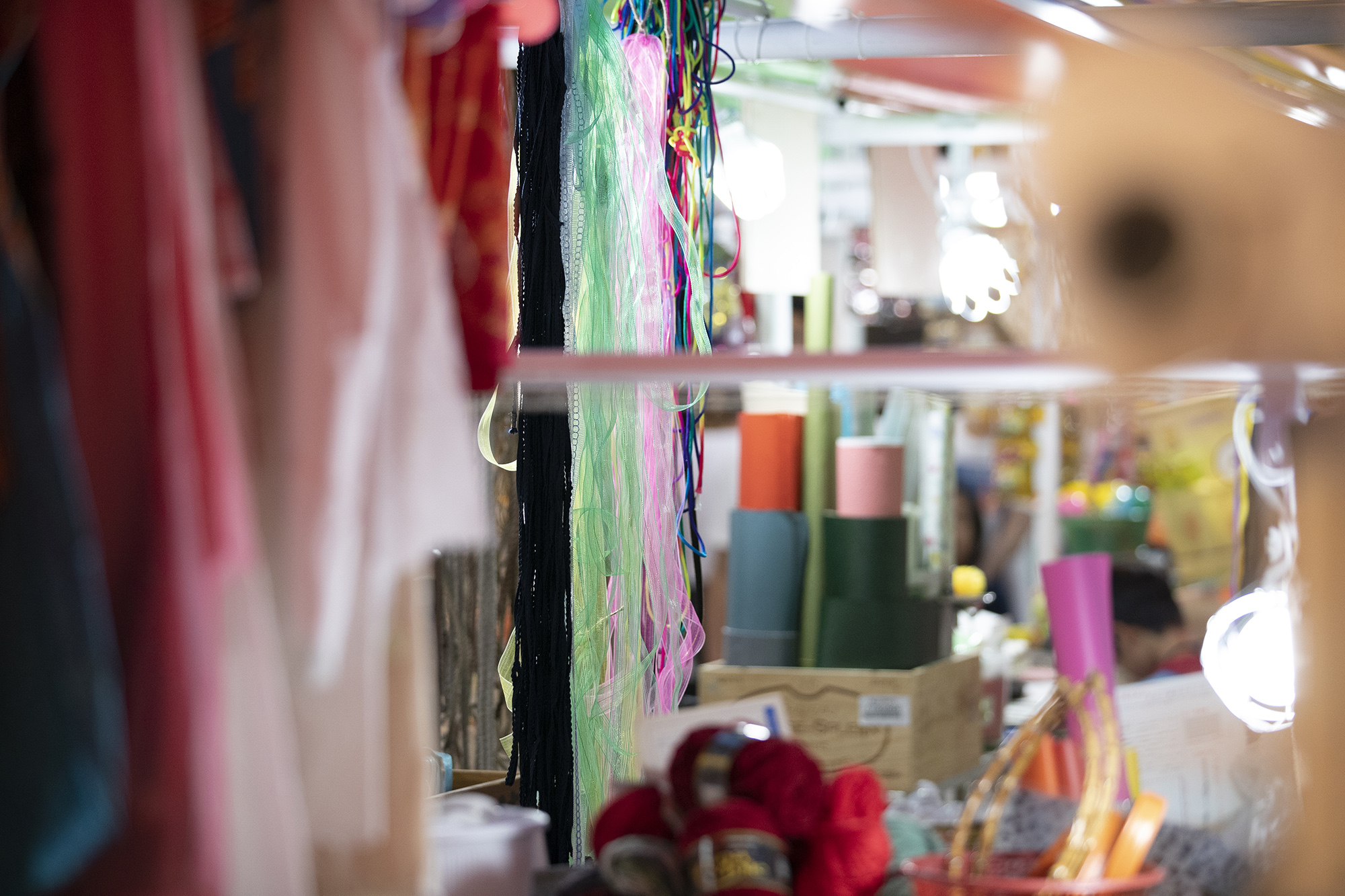
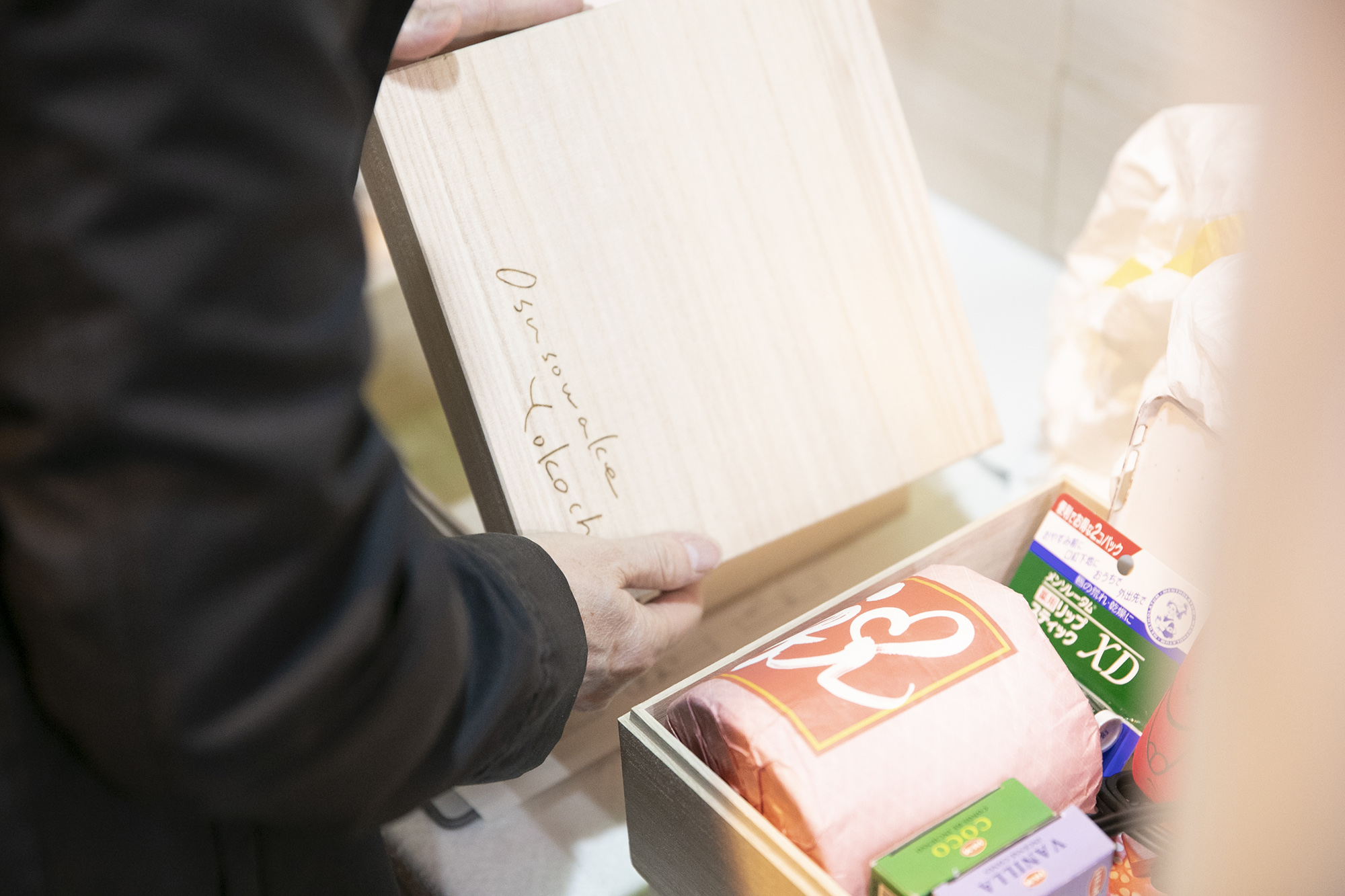
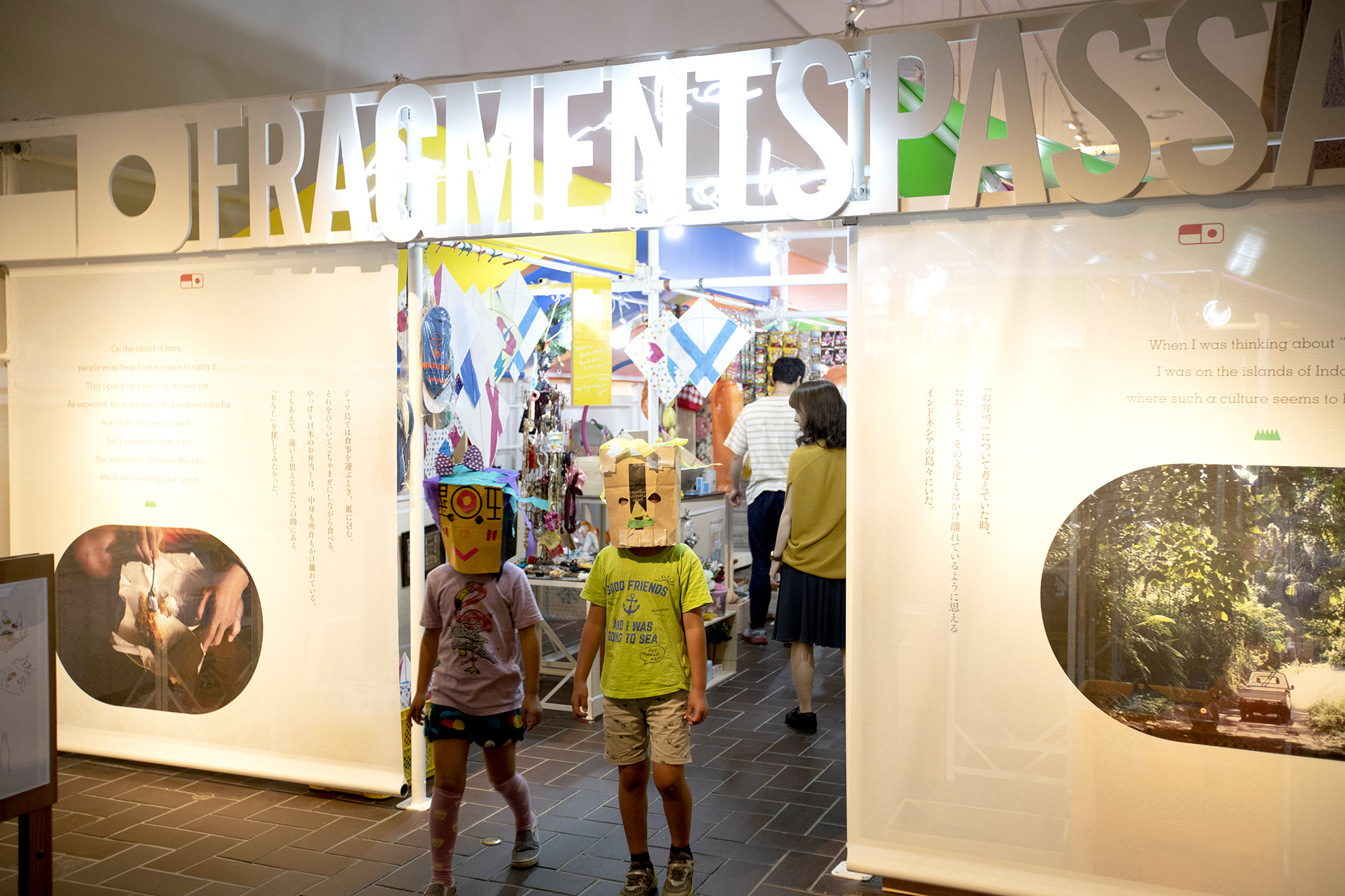
photo by CULTURE
Outline
Project presented at the Tokyo Metropolitan Art Museum's special exhibition, "BENTO—Design for Eating, Gathering and Communicating". Inside the art museum appears a temporary narrow passage. Once we step into that street, there is a “space” called “Osusowake (sharing) market” where people can share things they bring. There, people bring things from home, spread rugs in the space, share things with other people. Day by day the passage transforms into a mysterious space where people and things come and go and gather. 《FRAGMENTS PASSAGE - Osusowake Yokocho》is a device for creating an alternative community and is a new type of public space laboratory, where the history of Ueno’s Ameya Yokocho and the history of South-East Asia transact.
概要
東京都美術館の企画展「BENTO おべんとう展―食べる・集う・つながるデザイン」で発表したプロジェクト。美術館のなかに現れた仮設の細道に足を踏み入れると、おすそわけがあつまる「市場」や、持ち寄ったものを自由におすそわけしあう「広場」がひろがる。家からものを持ち寄ったり、広場で敷物を広げたり、だれかに何かをゆずってもらったり。日に日に通路(パッセージ)は、ものやひとが留まり行き交う不思議な横丁空間へと変化していく。《フラグメンツ・パッセージ-おすそわけ横丁》は、日常にひとときの「場」や「コミュニケーション」をもたらす装置と捉えたおべんとうの特性と、東南アジアの伝統市場の風景や上野アメ横の歴史を交差させることから構想された、あたらしい公共空間のラボラトリー。
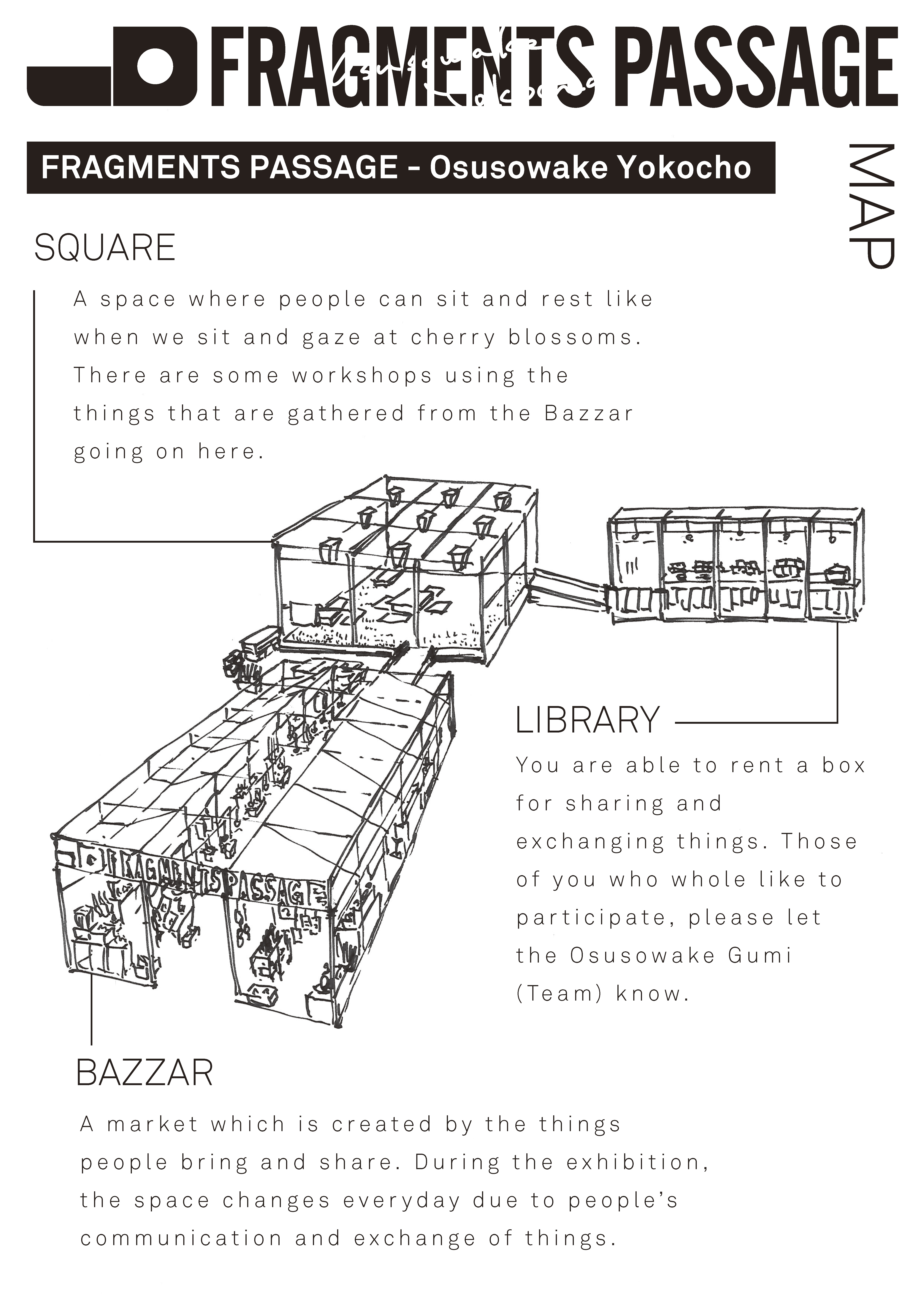
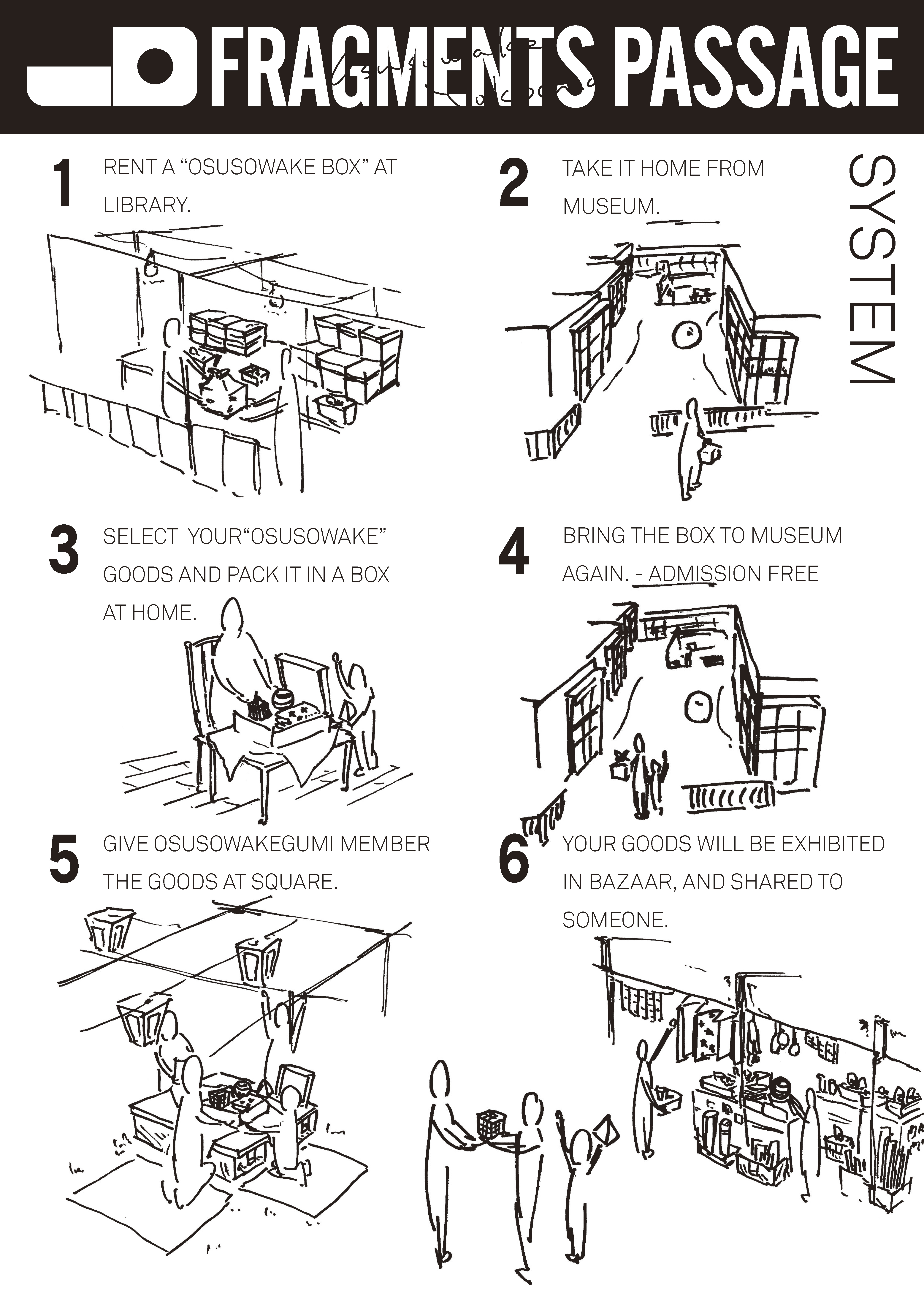
FRAGMENTS PASSAGE - Osusowake Yokocho
BENTO—Design for Eating, Gathering and Communicating
Period : 21 July - 8 October 2018
Location : Tokyo Metropolitan Art Museum
Co-Operation: Project Team "Osusowake Gumi"
Operation coopera: Appreciate Approach
Production cooperation: Deadstock Corporation,
Translation: Shimizu Miho, Kurea Fujita
Design: Yuto Hama Design Office
Special supporated by Loftwork Inc., 100BANCH,
Under Construction / OpenA, Inc.
GROW,
Kumai Shoten Co.
《FRAGMENTS PASSAGE - おすそわけ横丁》
「BENTO おべんとう展―食べる・集う・つながるデザイン」
期間:2018年6月21日~10月8日
場所:東京都美術館
共同運営:プロジェクトチーム「おすそわけ組」
運営協力:一般社団法人アプリシエイトアプローチ
制作協力:デッドストック工務店
バナーテキスト翻訳:清水美帆
バナーデザイン:濱祐斗デザイン事務所
特別協力:株式会社ロフトワーク、100BANCH、Under Construction / 株式会社オープン・エー、社会福祉法人グロー、株式会社クマイ商店
